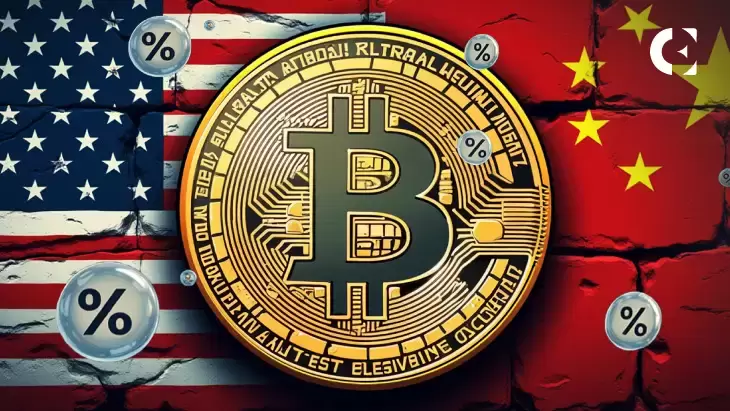 |
|
 |
|
 |
|
 |
|
 |
|
 |
|
 |
|
 |
|
 |
|
 |
|
 |
|
 |
|
 |
|
 |
|
 |
|
Cryptocurrency News Articles
L2 Tokens Exit Months of Sideways Trading as Recovery Begins
Nov 27, 2024 at 06:03 am
The combined market capitalization of L2 coins and tokens is on an upward trend. After months of stagnant trading, L2 tokens are regaining value.

After months of lackluster trading, L2 tokens are finally starting to show signs of recovery.
Several tokens have seen significant growth since hitting lows in September. L2 chains have remained crucial to the Ethereum ecosystem and DeFi activity, but they were overshadowed by the recent hype around meme tokens.
However, despite the shift in trader interest, L2 projects continued to quietly expand their infrastructure, making them a key narrative in the crypto space. As usual, Arbitrum and Optimism led the recovery in terms of market capitalization.
L2 tokens conclude months of sideways trading
L2 tokens are also completing their lengthy unlocking periods, which resulted in diminished selling pressures from unlocks or airdrops.
Market capitalization also reflects usage and utility, with funds and liquidity concentrating into the top L2.
Overall, tokens belonging to L2 networks recovered and reached a combined market capitalization of $17 billion. This value is still a fraction of the valuation of meme tokens, which peaked at $120 billion. However, L2 projects have much greater longevity and potential for innovation.
Base remains the biggest gainer in terms of reported transactions and efficiency. However, the protocol is tokenless and does not contribute to the narrative with price growth.
Base also has only $2.27 billion in value bridged, compared to Arbitrum with $8.48 billion and Optimism with $4.8 billion.
L2 tokens aim to recoup losses as their tokens slid on average by 13% year-to-date. The loss shrank, however, as top L2 tokens expanded by close to 50% in the past quarter. L2 is not a leading narrative in November, but it is making a return and regaining interest.
L2 chains compete for Ethereum data, blobs
L2 chains gained more attention as they competed for space on Ethereum. In the past month, most L2 started paying non-negligible rent to Ethereum, for using either blobs or calldata to secure their own transaction record. L2 can handle extremely fast transactions, but they still require access to an Ethereum block to achieve finality and additional security. This demand created the competitive blob or calldata market.
As a result of increased competition, blobs became the third-largest fee burner on Ethereum. Payments for blobs surpassed even the Tether smart contract, and moved closer to fees for all ETH transfers on the network.
Blob fees were constantly positive in the past week, highlighting the emerging competition for blob space. The increased L2 usage also helped slash Ethereum inflation to just 0.32%, as more of the fees get burned. As a result, the Ethereum network will produce a net 500K new tokens per year, instead of more than 900K due to limited burns.
L2 chains can also choose between blobs and calldata, based on their relative cost at the moment. For Ethereum experts, blobs are the preferable solution for L2 chains. Using calldata would crowd out regular users of direct L1 transactions, and make Ethereum too expensive for everyday tasks.
L2 remain largely profitable
L2 tokens gain attention for the ability of the chains to host super-apps and retain some of the earnings. Most L2 have robust profit margins, even after paying rent to Ethereum.
Linea and Base retain the most of their fees and app earnings. Most leading L2 chains are in profit, with the exception of Polygon and Taiko. The chains have automated their shift from blobs to calldata, making the optimal posting schedule if fee conditions are not favorable.
Among tokenized protocols, Arbitrum is the leader, with $95.32K in daily fees. Base is the leader for all protocols, producing $486.18K in fees.
Despite the positive fee performance, L2 are far from the top fat-fee apps and chains. L2 lag behind L1 chains, especially Solana and its ecosystem. Multiple chains and apps outpace L2 networks in terms of fee production. However, the fee schedule is a marker for the viability of L2 chains and their ability to retain the lowest possible gas fees.
Despite the economics of using Ethereum, L2 are successful in scaling and lowering transaction costs for DEX trading and DeFi. L2 tokens may also benefit from the growth of ETH, which recovered above $3,300 and sparked expectations of returning to new highs.
Disclaimer:info@kdj.com
The information provided is not trading advice. kdj.com does not assume any responsibility for any investments made based on the information provided in this article. Cryptocurrencies are highly volatile and it is highly recommended that you invest with caution after thorough research!
If you believe that the content used on this website infringes your copyright, please contact us immediately (info@kdj.com) and we will delete it promptly.
-

-

-

- The Crypto Market's Been Cooking Up Fresh Narratives This Year—from Bitcoin Crossing All-Time Highs to Solana's Gasless Memecoin Mania
- Apr 12, 2025 at 12:30 pm
- The crypto market's been cooking up fresh narratives this year—from Bitcoin crossing all-time highs to Solana's gasless memecoin mania. But here's what's flying under the radar
-

-

- Today, the broader cryptocurrency market experienced a significant sell-off, erasing $314.69 million in liquidations.
- Apr 12, 2025 at 12:25 pm
- Today, the broader cryptocurrency market experienced a significant sell-off, erasing $314.69 million in liquidations. According to metrics shared by Phoenix Group, a total of 108138 traders were liquidated
-

-

-

-




















![Crypto Otaku - CRYPTO CHAOS! 83K BITCOIN! CRYPTO RALLY!! XCN , JASMY , SWFTC LEAD!!! [Episode 228] Crypto Otaku - CRYPTO CHAOS! 83K BITCOIN! CRYPTO RALLY!! XCN , JASMY , SWFTC LEAD!!! [Episode 228]](/uploads/2025/04/12/cryptocurrencies-news/videos/crypto-otaku-crypto-chaos-k-bitcoin-crypto-rally-xcn-jasmy-swftc-lead-episode/image-1.webp)









































